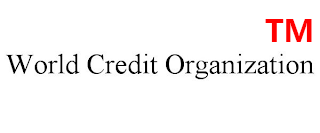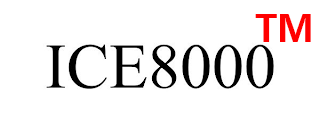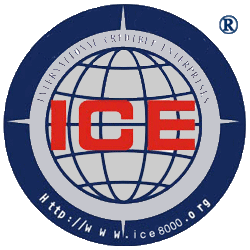ICE8000 Evidence Standard


ICE8000 International Credit Standard System
Evidence Standard
(Version: ICE8000-020-20090413-20141025-7) (This standard) Writer: Fang Bangjian ; proposer: Fang Bangjian ; deliberative body: World Credit Organization Credit Standards Committee; effectiveness level: administrative resolution
Chapter I General Provisions
1.1 In order to help the parties to effectively prove and cross-examine, promote social integrity, reduce transaction costs, and enhance human well-being, the World Credit Organization (WCO) has established this standard in accordance with internationally accepted legal principles and international practices.
1.2 The main legal basis for the development, application and implementation of this standard is as follows:
(1) The principle of freedom of the Constitution. The constitutions of the vast majority of countries in the world give people the freedom to defend their legitimate rights, the freedom to maintain social justice and the freedom to express their opinions.
(2) The principle of public order and goodness of law. This legal principle gives people the right to maintain social justice. The basic principles of civil law in most countries of the world include the principles of public order and good customs.
(3) The principle of good faith in law. This legal principle gives people the obligation of good faith. Most countries in the world regard the principle of good faith as the basic law of their civil and commercial laws.
(4) The principle of freedom of contract in law, also known as the principle of free agreement. This legal principle gives people the freedom to enter into a civil contract. The basic principles of civil law in most countries of the world include the principle of freedom of contract.
1.3 The conduct of the application and implementation of this standard shall be deemed to be the tripartite or multi-party contractual act of the World Credit Organization (WCO) in Delaware, USA, as an attestation or supervisor, and The relevant disputes arising from this act are applicable to and protected by the laws of the State of Delaware and the United States, and the jurisdiction is also the International Court of Ethics or the Delaware Court of the United States and the United States Federal Court. If the parties have agreed otherwise or otherwise stated in the applicable law and/or jurisdiction, the binding does not involve the World Credit Organization (WCO).
1.4 This standard is applicable to the evidence and cross-examination of the ICE8000 international credit standard system.
The evidence in this standard refers to the evidence provided by the parties for their claims.
The term "certificate" as used in this standard refers to the recognition or denial of the authenticity of the evidence by both parties to the dispute.
1.5 The evidence and the certificate are based on the principles of reasonableness, legality, integrity and supervision.
1.6 All parties applying this standard shall abide by the principle of good faith, moral bottom line and social responsibility bottom line in the process of applying this standard, and exercise and assume the rights and obligations stipulated in this standard.
1.7 All parties to this standard are deemed to have fully understood and committed to comply with all the terms of this standard. However, if any party to this standard finds any unfairness in any of the provisions of this standard, it has the right to publicly declare that it is not subject to public disclosure of the relevant circumstances and reasons and written notice to the World Credit Organization (WCO). Terms and conditions.
Chapter II Classification of Evidence
2.1 According to the external form of evidence, there are three types of evidence:
(1) Material evidence refers to the evidence of the various types of documents, audio-visual materials, relevant appraisal conclusions, and inquest records recorded by the parties in the form of physical evidence;
(2) A person's card, which refers to a written testimony or oral testimony issued by the witness;
(3) The statement of the party refers to the written or oral statement of the party.
2.2 Classification according to the purpose of the evidence parties, the evidence has the following two types:
(1) This card refers to the evidence submitted by the party claiming a certain fact to prove the existence of the fact. The purpose of this card is to prove the existence of a fact. This card is generally filed by the complainant and the complainant.
(2) A counter-evidence is an evidence that denies or overturns a party that has claimed a fact, and that proves that the facts are contrary or the facts do not exist. The purpose of the counter-evidence is whether the existence of a fact or the opposite is true. The counter-evidence is generally filed by the respondent and the accused.
2.3 According to the proof of evidence, there are two kinds of evidence:
(1) Direct evidence refers to evidence that can directly prove the facts. For example, a written contract with complete form directly proves that there is a contractual relationship between the parties.
(2) Indirect evidence refers to evidence that cannot directly prove the fact, but can be linked with other evidence to jointly prove and determine the facts. Such as: the delivery record and payment record of the parties, jointly prove that the two parties constitute a contractual relationship.
2.4 According to the source of evidence, there are two types of evidence:
(1) Original evidence refers to evidence directly derived from objective facts, namely: first-hand materials. Such as: the original contract, the testimony of witnesses on the spot.
(2) Evidence is evidence derived from the original evidence, namely: second-hand material. Such as: the testimony of the witness according to the facts of the case, the photo of the physical evidence, the copy, the copy of the documentary, the photocopy, etc., the interpretation of the original evidence by the parties.
Chapter III Essential Requirements of Evidence
3.1 The evidence should meet the following substantive requirements:
(1) The source is legal and legitimate, and the parties to the evidence may not obtain evidence by illegal or improper means;
(2) The content is true, and the parties to the evidence may not falsify the evidence or deliberately submit false evidence.
Chapter IV Formal Requirements for Evidence
4.1 If the issuer of the evidence is a natural person, the form of the signature is as follows:
(1) The words "This article is only for ICE8000" should be indicated;
(2) If the evidence is a copy, it should be marked as “the original and the original copy are correct, the original is stored in our office (or * somewhere)”, “original deposit in my place” can be omitted, if omitted, the original is issued Department
(3) There should be a signature of the person, and if the signature of another person is authorized, an authorization letter should be attached;
(4) The date on which the signature should be made;
(5) If the evidence is more than one page, the issuer shall sign on each page or at the seam of all pages;
(6) If the evidence is modified, the issuer should sign the amendment.
4.2 If the issuer of the evidence is a unit, the form of the signature is as follows:
(1) The words "This article is only for ICE8000" should be indicated;
(2) If the evidence is a copy, it should be marked as “copying with the original, the original is stored in our place (or * somewhere)”, “original deposit” can be omitted, if omitted, the original is issued ;
(3) There should be a signature of the manager;
(4) The administrative seal of the unit shall be affixed. If it is not the official seal of the unit, it shall be affixed with the official seal of the department that holds the evidence, or the official seal of the department that issues the evidence and the special seal of the relevant materials or the special seal of other statutory departments. Or the official seal of the authorized department with the power of attorney. If the unit explicitly authorizes the manager or other personnel to sign the evidence, the signature of the authorized person may be deemed to be the official seal of the unit, but with the relevant authorization. book;
(5) The date on which the signature should be made;
(6) If there is more than one page of evidence, the issuer shall affix an official seal on each page or affix its official seal at the seam of all pages;
(7) If the evidence is modified, the issuer shall affix the official seal to the amendment.
4.3 For the evidence verified by the ICE8000 credit institution, there should be a signature of the ICE8000 credit institution and the signature of the international credit practitioner.
4.4 When the evidence is audiovisual material, the author shall write a summary of the audiovisual evidence and sign it in accordance with the provisions of Article 4.1 and Article 4.2.
Written witness testimony or written statement of the parties shall be signed by the witness or the presenter in accordance with the provisions of Article 4.1 and Section 4.2.
4.5 When the party signs the evidence, in order to improve the credibility, you can press the fingerprint at the same time.
If you do not have a right index finger, you should use your finger in the following order and indicate: left index finger, right middle finger, left middle finger, right ring finger, left ring finger, right thumb, left thumb, right Little finger, left little finger.
4.6 In order to increase the credibility of the evidence, the parties may declare the CS clause or / and the conscience oath clause in the evidence when signing the evidence.
4.7 In order to prevent moral hazard, the World Credit Organization (WCO) or ICE8000 credit institution has the right to require the parties to commit to comply with this standard or/and the CS clause or / and the conscience oath clause or / and the evidence on the evidence when submitting evidence. It also has the right to require it to have the credit status of [established organization]. If the parties refuse, the World Credit Organization (WCO) or ICE8000 credit institution may also refuse to accept the evidence or consider its evidence to be less effective.
Chapter V: The burden of proof
5.1 Under normal circumstances, the burden of proof shall be based on the principle of “whoever advocates who gives evidence”, and the claiming party shall bear the burden of proof.
In the following special circumstances, the burden of proof shall be borne by the informed party in accordance with the principle of “who knows who will give evidence”:
(1) The claimant has no right or no access to relevant evidence due to system, contract or other objective reasons;
(2) In the case of absolute information asymmetry, it is objectively impossible for the claiming party to obtain relevant evidence.
5.2 The following facts, if there is no evidence to the contrary, the parties do not need to prove:
(1) Well-known facts;
(2) Natural laws and theorems;
(3) Another fact that can be reasonably presumed according to legal provisions or known facts and rules of daily life;
(4) facts confirmed by a referee having a legal effect in a national court;
(5) the facts confirmed by the arbitral institution's effective ruling;
(6) facts that have been proved for a valid notarized instrument;
(7) The facts confirmed by the relevant decisions of the International Moral Court.
5.3 For the creditor's rights disputes of the accounts receivable, unless otherwise agreed in the contract or the ICE8000 standard and the law otherwise stipulate, the burden of proof of the parties to the dispute shall be as follows:
(1) After the creditor provides the delivery certificate (or other chain of evidence that can prove the facts of the creditor's rights), the burden of proof of the card is assumed;
(2) After the debtor provides the payment voucher (or other chain of evidence that can prove the fact of the payment or the fact that the claim does not exist), the burden of proof of the counter-certification is assumed.
5.4 For the dispute over the quality of goods, unless otherwise agreed in the contract or the ICE8000 standard and the law otherwise stipulate, the burden of proof of the parties to the dispute shall be as follows:
(1) If the goods are within the warranty period, the buyer shall bear the burden of proof for the fact that he has raised the quality of the goods or has requested the replacement of the goods or has requested the maintenance of the goods; the seller has qualified the goods or has replaced the goods or Or the fact that the goods have been repaired, bear the burden of proof; if the seller claims that the quality of the product is caused by the fault of the buyer, the buyer should bear the burden of proof.
(2) If the goods are after the warranty period or without the warranty period, the buyer shall bear the burden of proof for his claim.
Chapter VI: Evidence and Evidence
6.1 If the use of an evidence adversely affects the parties concerned, the parties concerned should be given a reasonable objection period before confirming the validity of the evidence. The parties have the right to challenge the evidence within a reasonable period of time. If the party fails to exercise the right of dissent within a reasonable period of time, it may be deemed to be the same as the default evidence.
6.2 If the party objects to the evidence, it shall produce evidence of equal validity or validity.
6.3 If the party has a reasonable objection to the evidence, it has the right to request the relevant party to produce the original evidence. If the evidence is inconsistent with the original evidence, the evidence is invalid.
6.4 People can determine the effectiveness of evidence according to the following criteria:
(1) Under the same conditions, the effectiveness of the physical evidence is higher than the validity of the personal certificate, and the effectiveness of the personal certificate is higher than the effectiveness of the statement of the party.
(2) Under the same conditions, the evidence of the additional CS clause is more effective than the evidence without the CS clause.
(3) Under the same conditions, the evidence of the attached conscience vow clause is more effective than the unattached conscience vow clause.
(4) Under the same conditions, the written statement and testimony are more effective than the oral statement and the testimony.
(5) Under the same conditions, the evidence's validity of the statement of the parties shall be distinguished according to the reasonableness of the statement.
(6) Under the same conditions, the evidence validity of the witness testimony is distinguished according to the integrity of the witness.
(7) Under the same conditions, based on the characteristics of easy identification and retrieval of fingerprint data, the evidence of the smuggled fingerprint is more effective than the evidence of the unpressed fingerprint.
6.5 After the party's cross-examination, people can determine the validity of the evidence according to the content of the cross-examination and the form of evidence.
Chapter VII Liability for breach of contract and method of investigation
7.1 If the party violates the provisions of this standard, it shall bear the following liability for breach of contract:
(1) The corresponding legal liability, namely: the legal punishment prescribed by the relevant applicable law.
(2) Corresponding credit responsibility, that is, to bear credit punishments such as internal complaints, public complaints, credit warnings, internal exposure, public exposure, joint exposure, etc.
(3) The corresponding industry self-discipline responsibility, namely: announcement of criticism, fines, cancellation of credit card, prohibition of self-discipline and other disciplines.
(4) If the breach of contract causes losses (including material damage and mental damage) to others, it shall be liable for compensation. If the breach of contract constitutes a malicious dishonesty, it shall also make punitive damages to the infringed person in accordance with international practice and the principle of common law.
7.2 Method of investigation of breach of contract liability:
(1) According to the "ICS8000 International Credit Standard System Internal Complaint Standard" or "ICE8000 International Credit Standard System Public Complaint Standard" or "ICE8000 International Credit Standard System Credit Warning Standard" or "ICE8000 International Credit Standard System Internal Exposure Standard" or "ICE8000" International Exposure Standards for Public Credit Standards or Joint Exposure Standards for ICE8000 International Credit Standards System for credit complaints and credit penalties;
(2) Applying for arbitration under the International Credit Dispute Arbitration Commission in accordance with the ICE8000 International Credit Standards System International Credit Dispute Arbitration Standard, without the need to submit a separate arbitration agreement;
(3) Apply to the International Moral Court for trial in accordance with the ICE8000 International Credit Standards System International Credit Dispute Trial Standard;
(4) If the defaulter has the membership of the World Credit Organization (WCO), the parties also have the right to make a complaint in accordance with the World Credit Organization (WCO) Member Supervision Standards;
(5) File a lawsuit in the US Delaware Court or the US Federal Court in accordance with the laws of the State of Delaware or the United States federal law.
7.3 Violations of the provisions of this standard may and should be considered as an independent breach of contract or untrustworthy behavior. If the relevant parties appear in the process of applying this standard, such acts as fraudulent, covert, defamatory, insulting, and denying others' credit evaluation rights, the act is an independent malicious dishonesty act or an independent serious malicious dishonesty. The parties concerned have the right to merge. Investigate or separately pursue the responsibility of the independent dishonesty.
7.4 The responsibility for breach of contract in this standard shall be based on the principle of ignoring:
(1) Only the aggrieved party will take the initiative to pursue the investigation, and the defaulting party will bear the corresponding liability for breach of contract;
(2) The aggrieved party has the right to decide whether to initiate the corresponding accountability procedure for breach of contract;
(3) The aggrieved party has the right to understand the defaulting party or reach an agreement with the defaulting party.
7.5 For the employee or agent who participates in, executes, or assists the party's breach of contract, the aggrieved party has the right to pursue its corresponding responsibility unless it proves that it is not at fault.
7.6 The World Credit Organization (WCO) shall bear economic compensation for its own faults, and the expenditure for economic compensation shall be included in the financial plan of the World Credit Organization (WCO) for the next year. If the economic compensation is large, compensation shall be made in each year.
After accepting economic compensation, the World Credit Organization (WCO) has the right to recover losses from units or individuals responsible for acts of dishonesty with gross negligence or subjective intent.
Chapter VIII Supplementary Provisions
8.1 This standard shall be implemented as of the date of promulgation.
8.2 The terminology involved in this standard, if its meaning is not agreed in this standard, its meaning is as follows in the ICE8000 International Credit Standard System International Credit Industry Terminology.
8.3 All kinds of materials submitted by the relevant parties to the World Credit Organization (WCO) (or ICE8000 Credit Agency) in accordance with this standard, the copyright agreement of which is set out in the ICE8000 International Credit Standard System Document Copyright Management Standard.
8.4 If the relevant parties know or ought to have known that any of the terms or conditions of this standard have not been complied with, but still do not expressly file a written objection in time for this non-compliance, it is deemed to waive their right to file an objection. The waiving party shall bear the legal consequences such as losses caused by the waiver, and the World Credit Organization (WCO) and other parties shall not be responsible for this.
8.5 This standard will be revised and improved. All parties to this standard should pay full attention to the revision of this standard and apply the latest version of this standard, but the behavior that occurred before the revision of this standard may not be subject to the new revised terms. The official website of the latest Chinese version of this standard is: /aenhw/gc/20.html .
8.6 The copyright of this standard belongs to the World Credit Organization (WCO), members can use it for free and unlimited; non-members can use it for free, study, training, research, self-use, reprint, reference, adaptation, reference, reference under the premise of indicating or declaring the source. , reference. No unit or individual may plagiarize plagiarism or disguise plagiarism or otherwise infringe. Otherwise, we will jointly expose the infringing units, individuals and related personnel after the investigation of the infringement facts is clear (to issue a credit wanted order to the society). And reserves the right to pursue their legal responsibility. Do not infringe or infringe.
8.7 The standard version number is expressed as: ICE8000-abcd, where: the front-end ICE8000 indicates that this standard is one of the standards of the ICE8000 international credit standard system; a is the serial number of the standard in the ICE8000 system standard, if this standard is Abolished, the serial number is sometimes transferred to other standards; b is the initial writing time of this standard; c is the latest revision time of this standard; d is the number of revisions of this standard.
8.8 This standard is interpreted by the World Credit Organization (WCO).


